How to Become a Rockhound
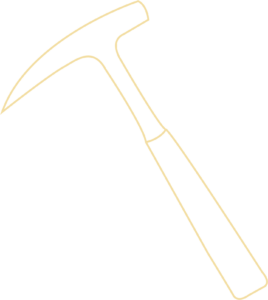
Picture yourself–you’re out on a hike with some friends or your family, everyone’s supposed to be enjoying nature, and the others are practically running up the trail ahead of you. In the meantime, you’re staring down at the trail, stopping every 50 feet, and picking up every rock that looks interesting. If this situation is familiar to you, then you’re already a rockhound.
The great thing about being a rockhound or wanting to be a rockhound, though, is that you can be a rockhound almost anywhere! (Of course, it does help to be outdoors, but that’s not absolutely necessary—see “What If You Can’t Get Out There?” later on in this page.) Sure, you can be on a hiking trail, but you could also be on a beach, in a gravel parking lot, on a sidewalk next to some landscaping stones, or, if you’re lucky, on a field trip at a mine or special rock collecting area.
The important thing, no matter where you are, is that you like to look for cool rocks. You don’t have to have any special equipment or go to exotic locations, you can look wherever you are and just pick up any rock that looks interesting, maybe after kicking it a few times to loosen it up if it’s stuck in the dirt. Along with being able to do it anywhere, the great thing about collecting rocks is that you can make it be whatever you like, from a sometimes hobby to a total obsession!
So how do you go from being a beginner to being a major rockhound? It all comes down to three things: 1) knowing about rocks, 2) having the right tools, and 3) getting to where the rocks are.
Knowing About Rocks
Hey, if you’re on this website, guess what? This is a great place to learn more about rocks! You can find out what they look like, what color they are, what shape they are, how heavy they are, why they’re called what they’re called, where to find them, and more! All of this information is available in the science section for each Rock Readers card as well as the different parts of the general science section.
If you want to find out more, two other great online resources are Wikipedia and Mindat. Some teachers and college professors don’t think Wikipedia is that reliable and don’t consider it “peer-reviewed,” but the information that it has about rocks and minerals is great, with everything you’d want to know about them…and a lot that’s so complicated it’ll make you go cross-eyed. Since Wikipedia is crowdsourced, for many of its pages it’s been reviewed by more “peers” than most scientific journals.
A lot of the science stuff you’ll find about rocks and minerals on Wikipedia comes from a site called Mindat that’s only about rocks and minerals. Thousands of serious rock collectors have added information to this site, and you can find pretty much everything there is to know about any rock or mineral and everywhere you can find it in the whole world. It’s very science-y at times, though, so it takes some time getting used to it.
One other resource that helps a lot is a “field guide” to rocks and minerals–also called a guidebook, nature guide, or handbook, depending on who publishes it. And as rockhounding gets more and more popular, you have more and more choices of guides. These are small books that list the most popular/common minerals, with photos of each mineral, a description, and fun facts. Actually, they’re a lot like this website! But they can be really handy to quickly flip through or bring with you to places you don’t want to be carrying electronics or where there’s no Internet. They can also help when you don’t know exactly what you’re looking for and you just want to see what’s out there.
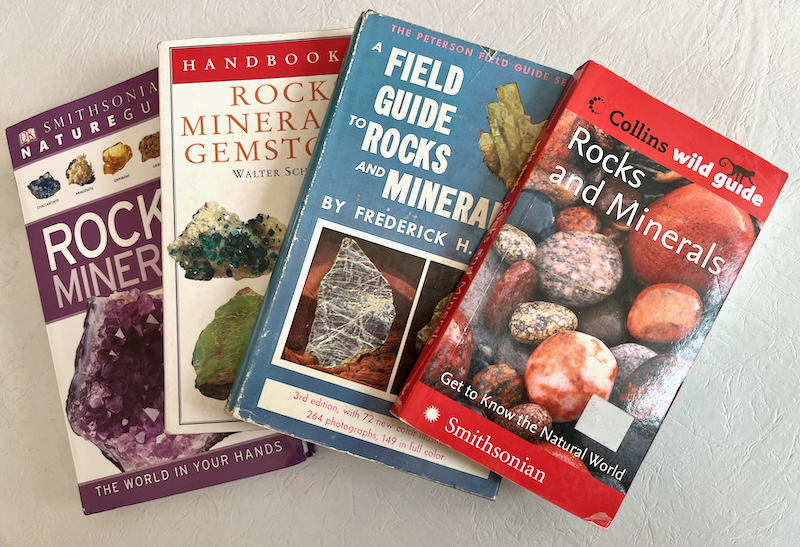
The other big source of information to know more about rocks is you (yourself) and other people. With regards to you, one of the best ways to learn about rocks is to get out there and look for them, find different kinds of rocks, and get to know what they look like and where you can find them. It’s kind of like “practice, practice, practice,” but it’s way easier and more fun than practicing something really complicated. Also, the more you practice, the more rocks you’ll have!
You can learn about rocks from other people in all different ways—watching YouTube videos, joining groups on social media, talking to rock collecting friends or a teacher—but one of the best ways is to join a mineral club. All around the world, you can find groups of rockhounds of all different types who get together to talk about rocks; go looking for rocks; do fun rock activities; and swap, buy, and sell rocks. These people can include geologists, professors, jewelry makers, prospectors, gold panners, fortune tellers, and in general just anyone who loves rocks. Since they’re all different types of people, they know all different types of things about rocks, and they’re in the club to share what they know with everyone else. And as you learn more, maybe you’ll teach them a thing or two! See the Learn More! page for links to some great mineral club resources.
Having the Right Tools
When you start out as a rockhound, the great thing is that you don’t really need any tools at all. You can just wander around looking for rocks and pick up the ones you like. But if you want to get more serious, you’ll want to gradually add some tools to help you get the rocks you want, be safe while doing so, and be able to take your rocks home with you.
Safety First
Although safety came second in the list above, it’s really important to think about safety first. Rocks can be sharp–for example, broken quartz crystals can cut you; rocks can be hard–a rock can bonk you on the head and knock you out; and rocks can be unstable when they’re piled up–if a pile of rocks is unstable, it’s pretty easy to lose your balance and fall onto the rocks (see “rocks can be hard”). Yes, rockhounding can be a dangerous business, but you can make it pretty safe if you have the right safety equipment, and fortunately that equipment doesn’t have to cost a lot.
What kind of safety equipment do you need? We’ll start off simple and work our way up, although really not that far up.
- Pants–These will protect your legs from getting scratched while you’re out rockhounding. Cost is…, well, hopefully you already have some pants. If not, these should cost just a couple dollars at a thrift store.
- Work gloves–These will protect your hands in case you pick up a sharp or rough rock, use tools such as a geology hammer or a hammer and chisel, or fall while you’re out collecting and catch yourself with your hands. Any work gloves will be helpful, but ones with grippy palms will help you hold tools and pick up rocks. Cost is $5 or $10.
- Safety glasses–If you have a geology hammer or a hammer and chisel, anytime you’re hitting a rock, you should be wearing safety glasses. Chips of rock will go flying as you hammer, and you don’t want them to go flying into your eyeball. Cost is $5 or $10 for basic glasses.
- Sturdy boots–When you’re out collecting rocks, you want to be stable, and you want to protect your feet. Hiking boots have nice ankle support to keep you stable but protect your feet pretty well too. Work boots focus more on protecting your feet but can have some ankle support too. Both types of boots are available with steel toes, which protects your feet even more, especially from heavy things like big rocks falling on them. Cost is $40 or more.
- Knee pads–If you want to get down close to the rocks, the best thing to do is be on your hands and knees. And since your hands and knees will be on the ground or on rocks, you’ll want to be wearing gloves (see above) and, if you have ’em, knee pads to protect yourself. You have a lot of different choices for types of knee pads, with different stores selling them for sports like soccer or wrestling, for gardening, for rollerblading or skateboarding, or construction or cement work. Any of those will be helpful, but the ones with hard plastic covers will protect you the most. Cost is $10 to $50.
- Other things–If you join a club and want to go on field trips, especially to mines that are still operating, you may have to wear gloves, safety glasses, a hard hat, steel-toed boots, and a reflective safety vest. If so, you’ll want your sturdy boots to have steel toes, and you’ll want to get a hard hat and a reflective safety vest.
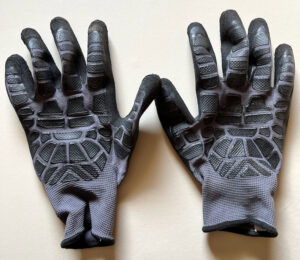

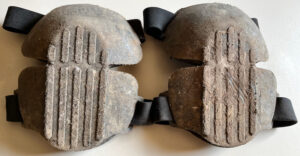

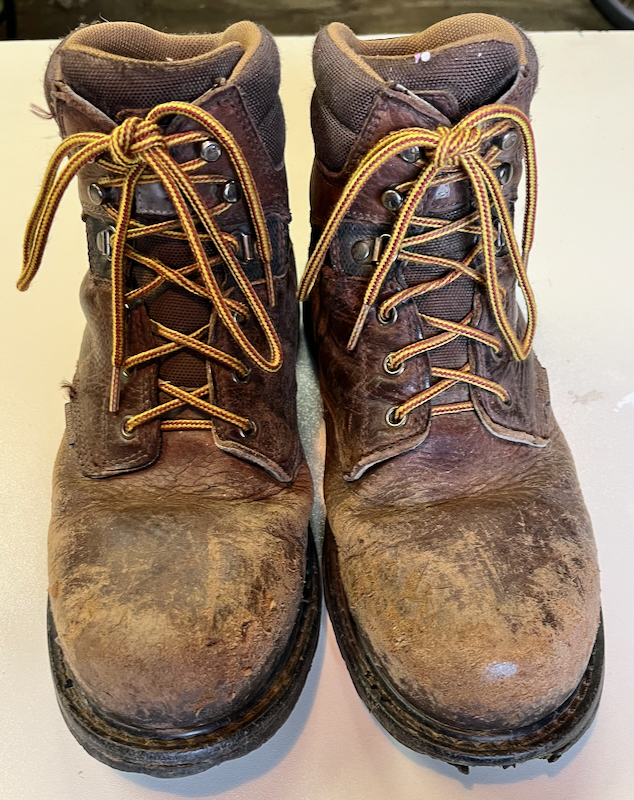
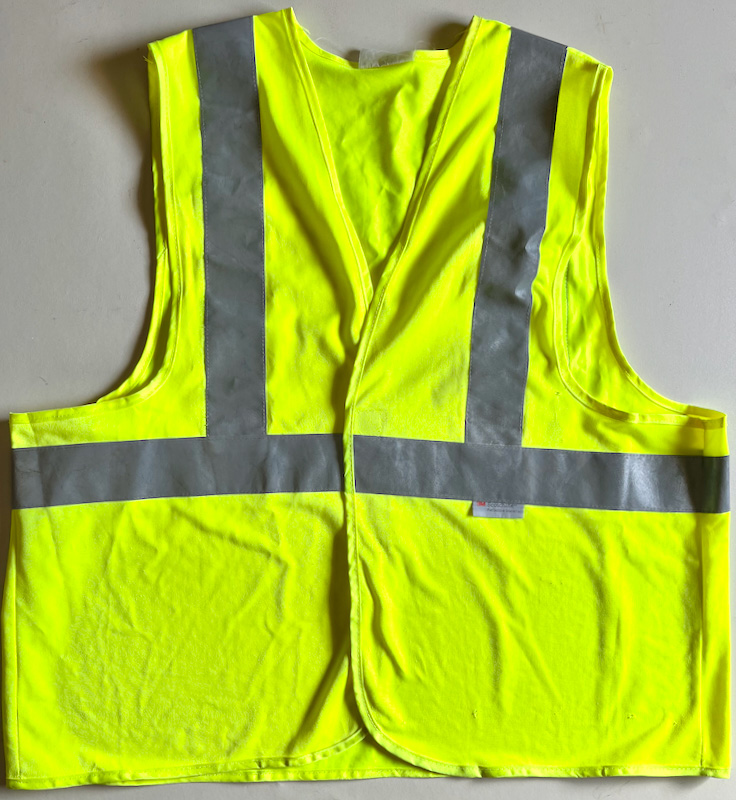
Getting the Rocks
If you want to expand your rockhounding horizons beyond your bare, or gloved, hands, several tools can be helpful. Fortunately, it doesn’t take much to move to the next level. Then again, there are so many levels you can go to! We’ll start with the basics.
- Geologist’s hammer–This is the classic hammer with a short, square, flat face on one side of the head, and a single long, pointy spike on the other side. A lot of people think this is the hammer you use to whack big hard rocks to break them up, but it’s not durable enough to do too much of that. Instead, you can use it to break softer rocks, split layered rocks, and dig in dirt or crumbly rock with the pointy end. It’s a good multipurpose tool to start with, and it makes you feel like a geologist.
- Crack hammer and chisel–A crack hammer looks like a mini sledgehammer, with a heavy head that has two large, flat faces, and a handle that’s as long as the one on a standard hammer you use for pounding nails. You can use a crack hammer by itself to pound on rocks like a prehistoric cave-person, but it works much better if you have a chisel to use with it. You want a chisel that is made for breaking up rock or cement, not woodworking, and you’ll save your hands from a lot of pain if you get one that has a hand guard built into it. You’ll use a hammer and chisel to break smaller pieces of rock off of bigger pieces, either because you just want to bring home a small piece, because the big rock is so big you couldn’t carry it if you wanted to, or because the big rock is bedrock and attached to the Earth. Remember to always wear safety glasses if you’re using these.
- Hand rake–If you’re out rockhounding and you’re not banging on rocks, most likely you’re digging in the dirt for rocks. One of the most handy tools for that is a hand rake, one of those garden tools with three tines (like fingers), about a foot long, and easy to use with one hand. You use it to break up the dirt and scrape it away a small amount at a time so you can see the rocks in it as you go. It’s a little more gentle than shoving a shovel into the ground, so it’s safer if you’re looking for nice minerals.
- Shovel–Sometimes you actually want to shove a shovel in the ground, if you know you need to get under a bunch of boring dirt or rock to get to the good stuff. You could haul around a full size shovel, but the handiest kind of shovel for a rockhound is what’s called a “latrine shovel,” which you can get at Army/Navy stores and other places. It’s small and lightweight, folds to fit in a backpack, and sometimes has a special edge you can use to cut through roots.
- Other things–If you really get into rockhounding, you might want to add a brush for brushing off specimens, a loupe (magnifier) to zoom in on rocks you find, a sifting screen for more easily separating cool rocks from dirt or sand, a UV light for checking for fluorescent rocks, etc. It’s fine to just add stuff like this one at a time as you go and learn more about how these tools will help you be a better rockhound.
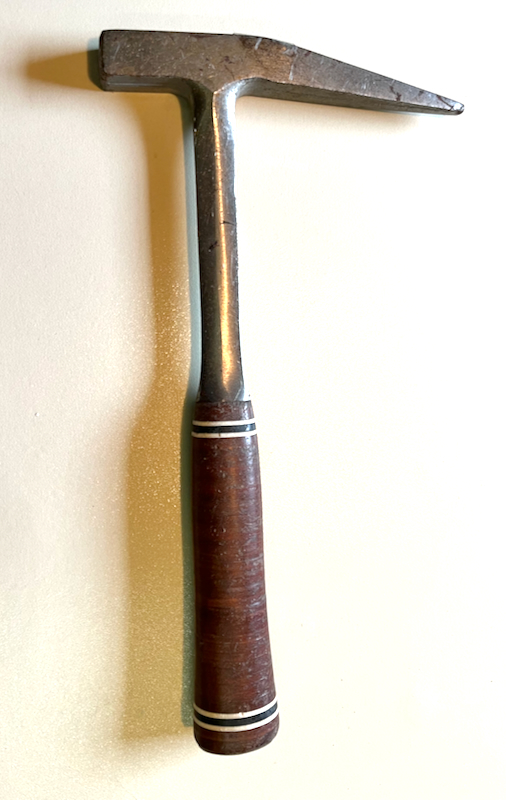
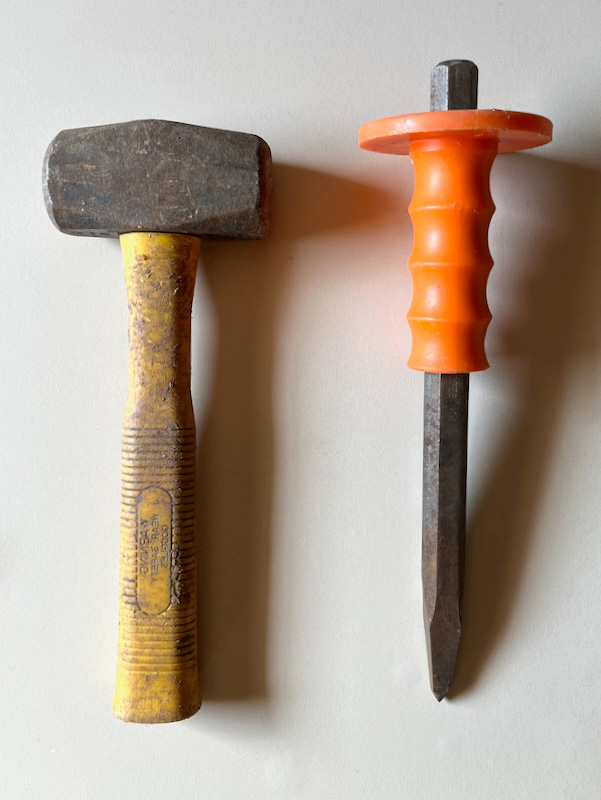


Bringing ‘em Home
The tools for bringing rocks home are some of the easiest and cheapest to get.
- Bucket–This is for holding the rocks you find while you’re out rockhounding. Choose a bucket you can carry if it’s full of rocks. If you’re younger and smaller, you can use a small bucket, like one that’s already in your house or apartment and is used for cleaning. It depends on how much you can carry. If you can handle a bigger bucket full of rocks–and oh, they can be heavy!—then the standard rockhound bucket for adult rockhounds is a five-gallon bucket like you can buy at a hardware store or get from a restaurant kitchen or a cafeteria that buys a lot of pickles.
- Backpack–If you don’t want to haul around a bucket, you can always just use your backpack for carrying the rocks you find. A school backpack works fine, though you might kind of destroy it by carrying rocks, or there are tougher backpacks that are not too expensive. You can find those at Army/Navy stores or other outdoor equipment stores. If you do carry rocks in your backpack, they might bang together, so if they’re fragile, be sure to wrap them up to protect them.
- Wrapping materials–Especially if you carry your rocks in a backpack, but also if you use a bucket, it’s good to bring along something to wrap up any rocks that are fragile and could get broken, scratched, or chipped.

Getting to Where the Rocks Are
Aye, matey, that’s the crux of the matter: How do you get to where the rocks are? If you live in a big city and everything’s paved over, you might not have a lot of convenient options handy. On the other hand, if you live out in the country, you might be able to walk out your door and start collecting right away. Fortunately, no matter where you are, there’s probably a way for you to get to where the rocks are.
Yes, you can be a rockhound almost anywhere, if you can get outdoors (and even if you can’t, which we’ll discuss at the end in the section called “What If You Can’t Get Out There?”). You just have to think like a rockhound, which means you think about rocks pretty much all the time, and you have your rockhound radar on. When your rockhound radar is on, you’re always aware of there being rocks around you–in a park, in your front yard, in your neighbor’s yard, in a parking lot, at the beach, in an old mine–wherever. And if there’s something cool to be found, you’ll find it.
Science Author Confession

Sometimes your rockhound radar can get a little bit out of control. For example, at my house, we raise chickens for eggs, and to keep things from getting too smelly in the coop, every day I make a point of removing chicken poop from the coop. But when I do so, my rockhound radar activates, and there I am, trying to uncover every possible, uh, “treasure” that I can to add to my “collection” (the compost heap, that is), and I end up spending way too much time in there as a result.
Now the sticky part, especially these days, is that in some of these sorts of places, you might not be allowed to collect rocks, or you might have to ask for permission. For example, in most national parks in the United States, you’re not allowed to collect rocks or pick up and take home pretty much anything from the park. As for needing permission, unless your neighbor really likes you or doesn’t care about their yard, they might not want you digging around. People you don’t know might be even more reluctant to have you on their property. And old mines or operating mines might not even be able to give you permission to collect there because of safety regulations or legal liability–someone might sue them if they break their leg while collecting there. So it’s important to know the rules regarding collecting at places that are open to the public and ask permission for any place that’s privately owned by a person or a company.
Public Lands
On the other hand, some places are open to the public for collecting, and a number of places actually encourage people to collect. How awesome is that! For example, in the United States, some state parks exist mainly for rock collecting. In New Mexico, there’s a park called Rockhound State Park–now that’s got potential! In Arkansas, Crater of Diamonds State Park is perhaps the only park in the world that’s open to the public specifically for finding diamonds–woo-hoo! Although U.S. national parks don’t allow collecting, some U.S. national forests, such as White Mountains National Forest in New Hampshire, and national grasslands, such as Buffalo Gap National Grassland in South Dakota, allow collecting in certain areas. For the science author, collecting for a day in South Dakota was so much fun, and so successful, that it’s what inspired him to become a serious rockhound.
Friendly Canada can also be a great place to collect, especially in areas where it’s freely encouraged, such as Bancroft, Ontario, and The Bay of Fundy in Nova Scotia. In Australia, where rockhounding is called “fossicking,” a lot of public places allow people to collect for free, such as most of the ones listed on this Australian Geographic page. There are likely to be similar places in countries around the world, so if you’re in another country, do some research or ask someone who knows about rocks in the area, and hopefully you can find a public place that’s open to you for collecting.
Fee Dig Mines
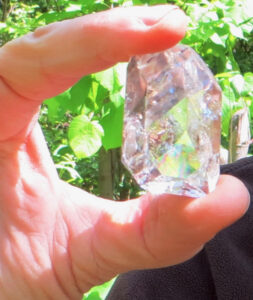
Now, most of the places we’ve mentioned are free, or at least inexpensive, locations on public land. But that’s not all that’s out there. You’ll find a whole lot more collecting places out there called “fee dig” mines, where you can pay a little money or a lot of money, depending on what you might be able to find there, to collect all day long on someone’s private property. One entire area that’s famous for fee dig mining is in and near Herkimer County, New York. In that area, the bedrock and soil for miles around contain beautiful quartz crystals nicknamed “Herkimer Diamonds,” and there are a whole lot of fee dig mines where you can pay between $5 and $100 to collect as much as you can carry.
Other fee dig mines pop up in North Carolina, Georgia, New Hampshire, Oregon, Wyoming, California, Maine, and other states in the U.S. In Europe, both Sweden and Germany have fee dig options, and there are likely others you can find in that region, especially if you live in the country and are a native speaker of the language. And of course it’s likely there are other options all over the world, and it’s worth doing some research—if you live in or are visiting other parts of the world—to see what you can find.
Mineral Club Field Trips
In the “Knowing About Rocks” section, we recommended joining a mineral club as a great way to learn more about the things that rockhounds are obsessed with. Well, joining a mineral club is also a great way to get to where the rocks are. For many mineral clubs, one of the main benefits they provide, the main reasons why they exist, and the main reasons why people join them is going on rock collecting field trips. If you’re having a hard time getting to where the rocks are, a mineral club can be the answer to your prayers. As mentioned earlier, to help you find a mineral club near you that you can join, we’ve provided some helpful links on our Learn More! page.
Mineral clubs offer a number of advantages when it comes to getting to where the rocks are:
- They have access to mineral collecting localities (rockhound speak for “locations”) that the general public can’t access. This can include people’s private property, old mines on private property, old mines on public property that are only open to mineral clubs, and mines that are still operating and only allow clubs to collect there on planned field trips. In many cases, clubs are allowed access solely because they have insurance that protects the property or mine owner from liability if someone gets hurt while collecting there. In areas where lawsuits are less common, clubs are allowed to collect at some sites just because they agree to be responsible and clean up after themselves. Unfortunately, that’s becoming pretty rare.
- At some private collecting localities, club members, especially if they’re on an official club field trip, can get a discount or even collect for free.
- Many club field trips make allowances for people who don’t have a car, can’t drive, or have a car that isn’t rugged enough to get to the locality. In such circumstances, members who have those challenges can often carpool with members who don’t, so they can still go on the field trip.
- When you go on a field trip with a club, it’s like you’re bringing along your own team of rock experts. Even if someone has just gone on one more field trip than you have, or has been to the locality before when you haven’t, they’ll be able to help you to know what you’re looking for or where to look for it. And almost always you’ll also have members along who know everything there is to know about the locality, every mineral you can find, and what everything looks like. Collecting on your own is definitely fun, but collecting with others, especially people with more experience, can mean coming home with much more great stuff (and knowing what it is) then you would have if you’d been alone.
As we said earlier, one of the best ways to learn about rocks, and, of course, to find them (!), is to get out there and look for them. No matter how you go about it–by yourself nearby, with your family or friends at a public site or a fee dig mine, or with a mineral club at a mine–if you’re going out and collecting, you’re definitely a rockhound.
What If You Can’t Get Out There?
A lot of this talk about rockhounding might seem to assume a lot about people’s capacities and abilities, and if you think that, you’d be right. The classic idea of rockhounding usually assumes a lot of field collecting, involving going to remote locations, scrambling over rocks, hammering on them, and digging in the dirt. However, that doesn’t mean you can’t be a rockhound if some or a lot of these things aren’t within your reach, for whatever reason.
Really, rockhounding is a state of mind, and as long as you have a mind, which you probably do if you’re reading this, your rockhound radar can work just fine, and you can use it in other ways and by other routes than field collecting to find and enjoy mineral specimens.
Silver Pick Collecting: Collecting with Your Wallet
If you have some, or a lot, of money, you can do what’s called “silver pick” collecting, where instead of using a steel chisel, you spend money (much of which used to be made of silver) to get the minerals you want. Some folks, when they get older and more creaky and maybe have a bad knee or a bad hip, decide field collecting is too difficult and switch to silver pick collecting, and it can help that people who are older tend to have more money than, say, little kids. But you don’t have to be older or creaky or flush with cash to be a silver pick collector. Rock collecting is such a popular hobby that all sorts of great stuff is available for people with very different amounts of money to spend.
If it’s difficult for you to leave your house or apartment, via the Web you can find many different websites that sell minerals at all different price levels for all different levels of collectors. (We’ve provided some examples in the “Where to Buy” section of the Learn More! page.) Most of them sell minerals for the price you see, but some have regular online auctions where you can sometimes get some major bargains. Many websites specialize in minerals, whereas some, like Etsy and Ebay, have minerals along with all sorts of other things.
If you can leave your house, you may live somewhere that has a local rock shop or two where you can buy minerals. Another option available to you if there’s a mineral club or other mineral-related organization nearby is to go to a rock and mineral show. A lot of mineral clubs will have such shows, where you can go to an auditorium, banquet room, or convention hall and visit a dozen or two different vendors all selling rocks, with many at low prices. Sometimes they’ll even have super cheap grab bags, allowing you to get several mystery minerals for a rock bottom price. Usually clubs will have such shows every year at around the same time at the same place, so they can be a great source for building your collection.
If you can travel further away and get to fee dig mines but can’t do the digging, many of the mines will sell specimens from the site for reasonable prices. On the other hand, if you can’t travel but you have the ability to sort through dirt at home, some fee dig mines, especially the ones for gemstones, will offer buckets or bags of dirt that they dug out of the mine. They’ll send one to you, and you can go through it at your own pace and see if there’s any cool minerals in there. If you can travel to a mineral museum, such as the American Museum of Natural History in New York, the National Museum of Natural History in Washington, DC, or the Maine Mineral and Gem Museum in Bethel, Maine, it will almost always have a gift shop where you can buy mineral specimens, although sometimes the prices can be a little high.
Other Ways to Collect: Going to Mineral Club Meetings, Etc.
You may have figured out that we’re big fans of mineral clubs here, and that doesn’t stop when it comes to collecting in different ways other than difficult digging on field trips. If you’re able to join a mineral club and get to one of their meetings, your collecting will likely get a boost. At mineral club meetings, often people who have collected on field trips or on their own will bring extra specimens to the meeting to give out to other members. Take it from us, rockhounds have a habit of taking home more than they need when they’re field collecting, so they almost always have extra stuff, and sometimes it can be pretty good!
If you’re just starting out, have never collected somewhere, or can’t collect somewhere, often more experienced members will offer to give you one or two of their extra specimens from a locality. Also, it’s not uncommon that older members will realize they need to find others to pass their collection on to, or members of whatever age might have a spouse who says they just have way too many rocks in the house, so either of those types of folks might start giving away rocks too.
Finally, two common fun activities at mineral club meetings are raffles and auctions. For raffles, the club will have mineral specimens that you can win if you buy one or more (usually very cheap) raffle tickets, and the number on your ticket is picked. In some cases, you might get a $50 specimen by buying a $1 ticket. Auctions at meetings can be silent auctions, where you go around the room writing bids for specimens you like and find out later if you won, or voice auctions, where you bid as the specimen is shown by an auctioneer and know right away if you bid highest and won. With auctions, too, you can often get nice specimens for really cheap.
Super last thing, you can also swap minerals with other members of your club, swap minerals with members of other clubs by mail, or even ask other clubs in other areas if they’d be willing to send some inexpensive specimens of minerals they have in their area to you or your club. These are less common ways to get rocks, but they definitely happen and can help you improve or expand your collection without a lot of work or money. And you can make friends with people in other clubs while you’re at it.
Just as people of all different stripes can love rocks, people can be rockhounds with all different capabilities, be they physical or financial. Keep your rockhound radar on, and you’ll find your way.